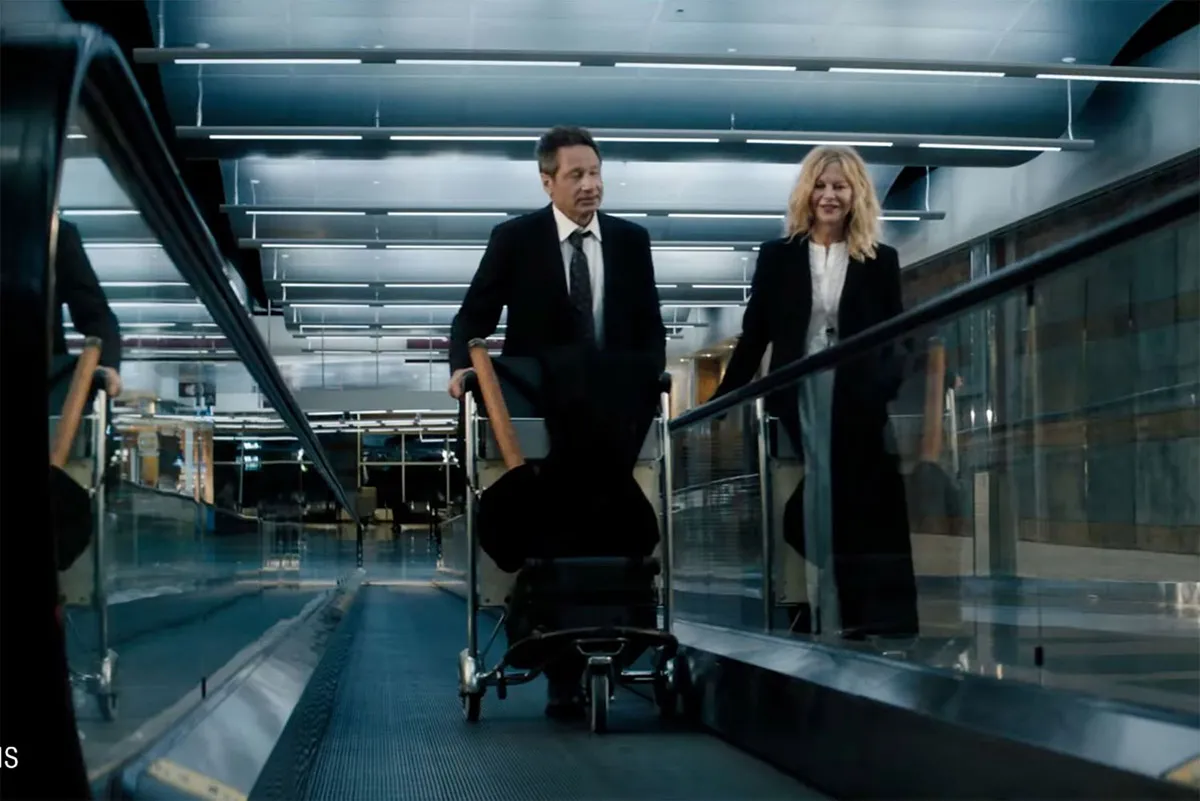In a striking return to the romantic comedy arena, Meg Ryan shines dual beacons of talent in “What Happens Later,” a film where she not only graces the screen but also commands the director’s chair and molds the narrative as co-writer. The film, a modern tale of lost love and the possibility of its reclamation, feels both like a homage to the greats who have defined the genre—like Rob Reiner and Nora Ephron—and a fresh departure from it.
Crafting the Spark: Direction and Screenplay
Ryan’s leap into the dual roles of director and co-writer could have been a precarious one, yet she lands with the finesse of an adept artist, bringing forth an authentic spin on the conventional romantic comedy formula. The narrative, woven from the threads of Steven Dietz’s play “Shooting Stars,” retains the sparkle of witty dialogue while delving deep into the nuanced heartbreak and tender hilarity of its characters.
The setup is quaint yet profound: two former lovers, Bill (David Duchovny) and Willa (Meg Ryan), serendipitously meet at an airport after decades apart. Their initial clumsy exchange, steeped in years of unspoken words, quickly peels back layers of defense, revealing raw emotion and complexity.
Cinematic Symphony: Performance and Chemistry
Duchovny’s textured performance is a testament to his versatility, blending humor and vulnerability with a delicate touch, showcasing a different shade than his beloved character in “Return To Me.” Ryan, paralleling her behind-the-camera prowess, delves into Willa with a depth unseen in her previous work. Her portrayal is multi-faceted—adorable, raw, and heartfelt—capturing the subtle shifts in her character’s relationship with Bill through their nicknames for each other.
Aesthetic Harmony: Visual and Sound Design
In “What Happens Later,” the cinematography by Bartosz Nalazek not only captures the intimacy of the moments shared by Bill and Willa but also paints their inner tumult. The expansive airport setting juxtaposed with tight, emotional exchanges crafts a canvas where each character’s solitary journey through past and present is etched against the backdrop of a brewing storm.
The sound design heightens the narrative tension, the storm’s crescendo mirroring the inner turmoil of the protagonists. And while the choice of ’90s pop hits cover could risk cliché, it instead complements the setting and mood with a nostalgic charm.
Palette of Emotions: Production and Costume Design
The production design’s clever use of installations, like the giant metallic heart and paper planes, serves as a visual metaphor for the narrative’s exploration of love’s fragile nature. Costume designer Kiley Ogle’s choice to dress the cast in black and white further emphasizes the thematic irony as the characters navigate the gray areas of their past relationship.
The Narrator’s Echo: A Unique Storytelling Voice
Adding an omniscient layer to the storytelling, the announcer (voiced by the enigmatic Hal Liggett) serves as a narrative device that binds the film’s theme of connectivity and introspection. This choice deepens the audience’s engagement with the unfolding drama and the characters’ introspective journeys.
The Captivating Crescendo: Montage and Magic
The film builds up to a montage that is nothing short of enchanting. It shows Bill and Willa, free from the world’s gaze, finding solace and laughter in each other’s company within the deserted airport terminals. It’s a sequence that elevates the film’s charm exponentially, echoing the classic elements of romance and playfulness.
The Final Appraisal
“What Happens Later” stands out as a beacon of mature romantic comedies. It does not succumb to the expected genre traps but instead charts a course through authentic character development and genuine emotional depth, with just the right touch of whimsy. It is a testament to Ryan’s evolution as a filmmaker and an actor, and a beacon for the future of romantic storytelling.
In a world that often seeks escape in spectacle, “What Happens Later” invites us to find wonder in the reconnecting of hearts and the simple, transformative power of human connection. Meg Ryan’s directorial finesse, coupled with a poignant narrative and heartfelt performances, make “What Happens Later” a film not just to watch but to experience.


1 comment
[…] Source link […]